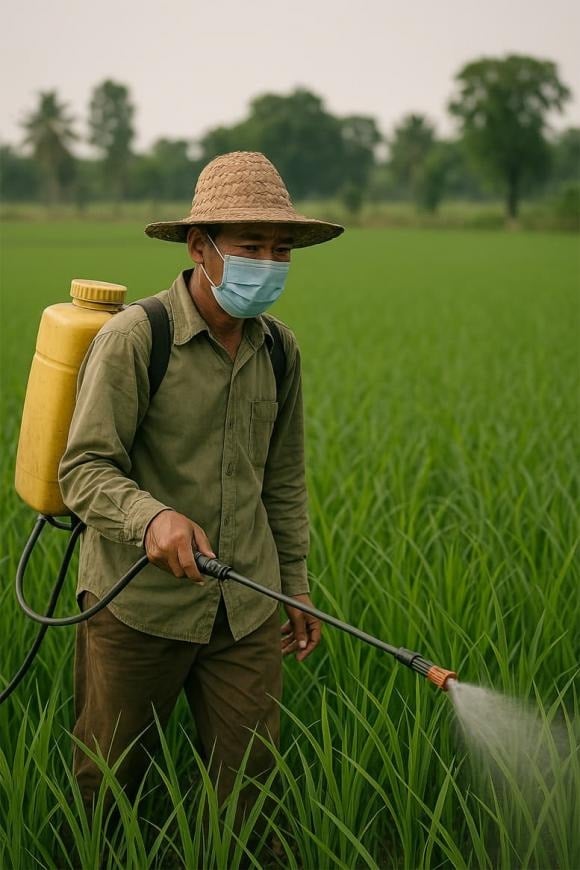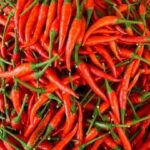Every profession comes with its own set of risks and potential health consequences. Some jobs pose direct threats to life, such as police officers chasing criminals, firefighters battling natural disasters, soldiers in combat, or miners. However, there are also professions that seem safe but involve long-term exposure to carcinogens, thereby increasing the risk of life-threatening illnesses in the future.
1. Construction Workers and Welders: Inhaling Risks on a Daily Basis
According to the International Agency for Research on Cancer (IARC), those in the construction industry are often exposed to asbestos, a carcinogen banned in many countries, as well as silica dust and welding fumes. These factors are closely associated with lung cancer, pleural mesothelioma, and bladder cancer.
2. Hairdressers: Beauty for Clients, Health Hazards for Themselves
Hair products like dyes, straighteners, and perm solutions contain harmful chemicals. Even in well-ventilated salons, hairdressers are directly exposed to these chemicals for extended periods, especially formaldehyde, which has been classified as a carcinogen by the World Health Organization (WHO). Studies indicate that hairdressers have a higher risk of developing blood cancers and bladder cancer than the general population.

3. Medical Staff Exposed to Radiation: Silent Sacrifices in Lifesaving Work
For diagnostic imaging professionals like X-ray technicians and nuclear medicine technologists, the risk of thyroid cancer, multiple myeloma, and lymphoma increases if radiation safety protocols are not strictly followed. While modern equipment has helped minimize risks, inadequate protection is still prevalent in many small hospitals and private clinics.
4. Pilots and Flight Attendants: Pressure and Hazards at High Altitudes
Pilots and flight attendants have a higher-than-average rate of melanoma. This is primarily due to their frequent flights at high altitudes, where exposure to cosmic radiation is significantly higher than on the ground. Additionally, constant time zone changes disrupt their biological rhythms, negatively affecting their immune systems and increasing the risk of breast and prostate cancers.
5. Chemical and Oil Refinery Workers: Working in a “Bomb Storage”
In chemical and oil refineries, workers are routinely exposed to toxic chemicals like benzene, toluene, and formaldehyde, all well-classified carcinogens. These individuals face elevated risks of blood, liver, lung, and bladder cancers. In Vietnam, industrial zones in Binh Duong, Dong Nai, and Ba Ria-Vung Tau have reported numerous cases linked to this work environment.
6. Farmers and Pesticide Sprayers: Sowing Seeds but Reaping Illness
Ironically, those directly involved in producing our food are among the most vulnerable to the harmful chemicals in fertilizers and pesticides. Substances like glyphosate, atrazine, and paraquat are banned or restricted in many developed countries due to their links to pancreatic, leukemic, and brain cancers. However, in Vietnam’s rural areas, the use of these chemicals is often unregulated.

7. Night Shift Workers: The Price of a Disrupted Body Clock
Working the night shift not only causes fatigue but also increases the risk of cancer. Research shows that disrupting biological rhythms reduces melatonin production, a natural antioxidant, thereby increasing the likelihood of breast, prostate, and colorectal cancers. Typical professions in this category include nurses, manufacturing workers, and security guards.
8. Firefighters: Heroes in the Flames, Warriors Against Cancer
In addition to the immediate dangers of firefighting, firefighters are also exposed to toxic fumes generated during combustion, such as acrolein, carbon monoxide, and formaldehyde, all of which are carcinogens. These substances not only permeate the air but also cling to their clothing and equipment. Prolonged exposure severely impacts their health, and studies show that firefighters have higher rates of respiratory, digestive, oral, and urinary tract cancers, with a 14% higher mortality rate from cancer.
9. Drivers and Traffic Controllers: Diesel Exhaust – The Silent Killer
Diesel exhaust, common in large cities, contains fine particulate matter (PM2.5), benzene, and polycyclic aromatic hydrocarbons, all recognized as carcinogens by the IARC. Additionally, prolonged sitting and irregular eating habits increase the risk of colorectal cancer in this occupational group.
10. Office Workers: Subtle but Real Hazards
Even though they are not directly exposed to toxic chemicals, office workers face cancer risks due to their sedentary lifestyles, prolonged stress, and poor dietary habits. Studies indicate that individuals who sit for more than eight hours a day have a significantly higher risk of colorectal, breast, and endometrial cancers compared to those who are more physically active.
The Ultimate Superfruit: Nature’s Candy with Astonishing Health Benefits
Introducing the revolutionary superfruit that is taking the health world by storm! With an incredible sweetness that surpasses cane sugar by 300 times, this fruit is a game-changer for those conscious of their health. But the benefits don’t stop there – it also boasts the ability to support cancer prevention, all without spiking blood sugar levels. This natural wonder is truly a gift from nature, and it’s easy to see why it’s becoming a favorite among health enthusiasts.
High Cholesterol Leads to Heart Disease and Stroke, but This Affordable Fruit, Sold in Vietnamese Markets, is a Natural Enemy
The humble fruit, a familiar ingredient in many Vietnamese dishes, is not just a flavor enhancer but also a powerful ally in the fight against high cholesterol and cancer. When used correctly, it can be an effective tool in maintaining a healthy lifestyle and reducing the risk of life-threatening diseases.
Cancer Cells ‘Go Crazy’ for These 3 Flavors: Unknowingly, You’re Feeding Them Daily.
The tantalizing sweetness of sugar, the indulgent richness of fatty oils, and the savory punch of salt – these three familiar flavors that enhance our daily meals are, ironically, the very ingredients that fuel cancer cell growth. This stark reality serves as a wake-up call, revealing an unsettling truth: the more we indulge our taste buds, the higher the risk of inviting disease becomes.



































